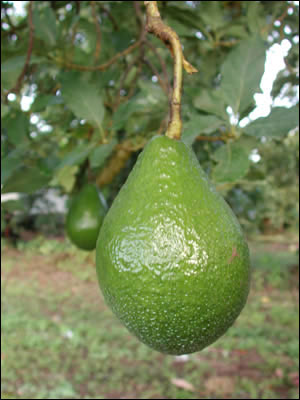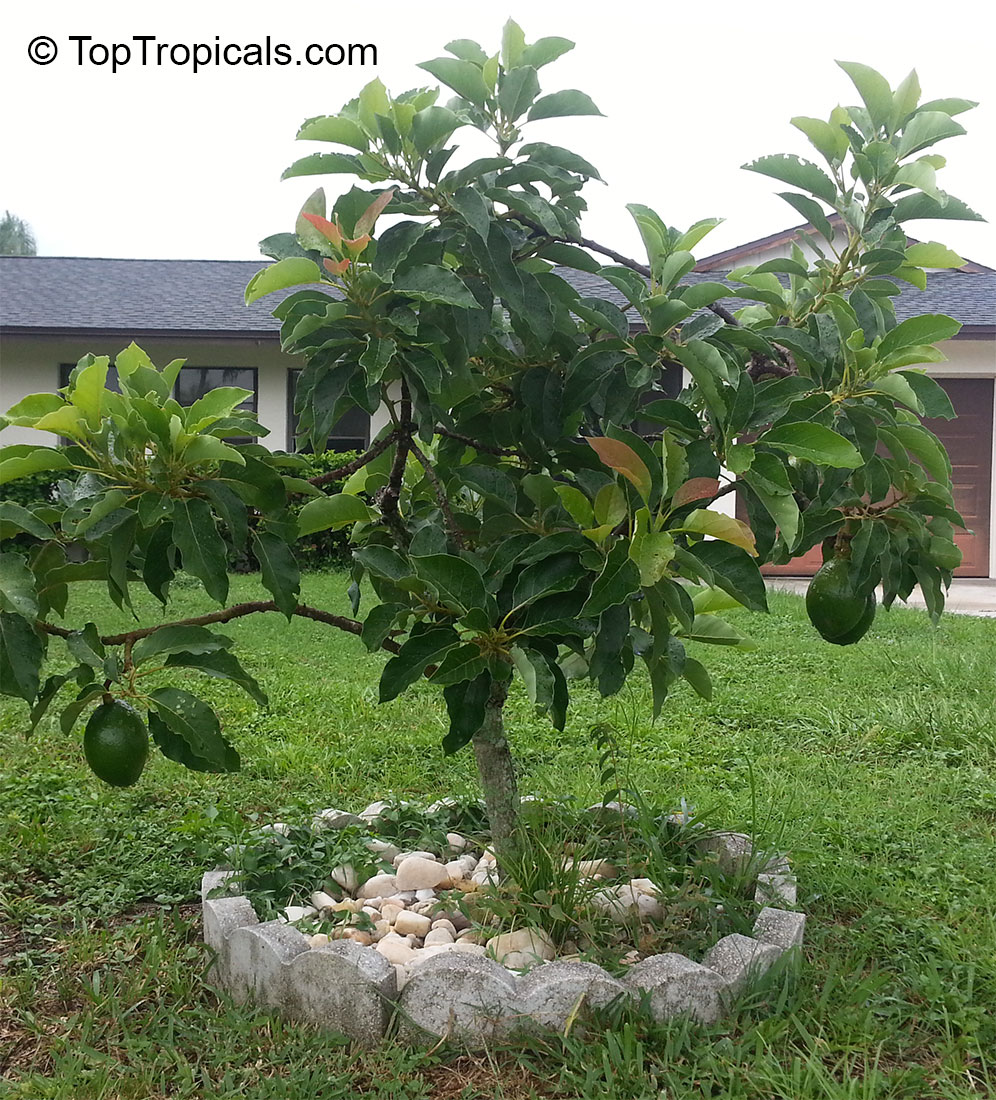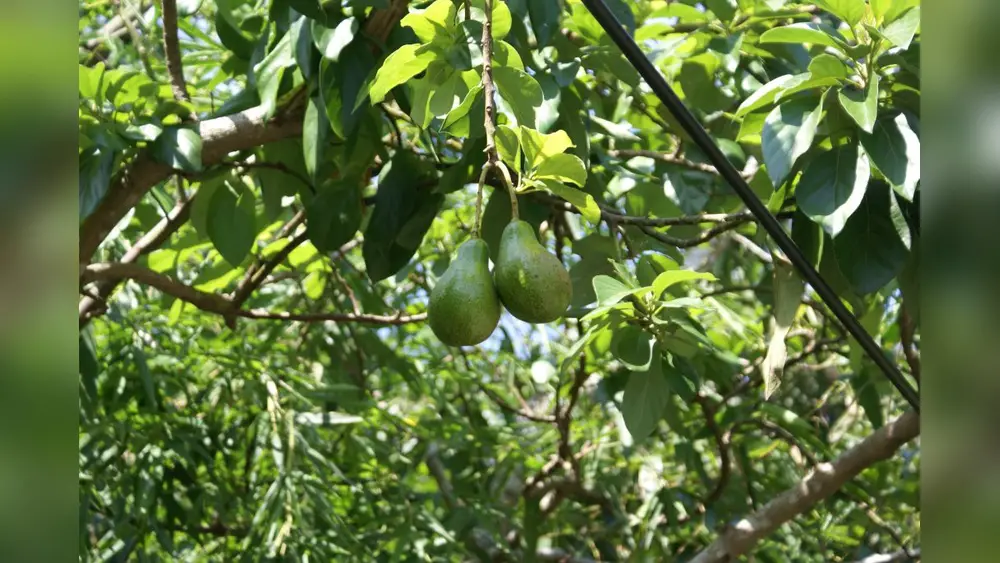Are you ready to grow your own avocado tree right in your Florida backyard? Knowing the best time to plant your avocado tree is the key to getting a healthy tree that will reward you with delicious fruit.
Plant too early or too late, and you might face slow growth or poor yields. But don’t worry—this guide will help you understand exactly when to plant your avocado tree in Florida’s unique climate so you can enjoy fresh avocados sooner than you think.
Keep reading to discover the ideal planting window, tips on choosing the right tree, and how to give your avocado the best start possible!
Climate Conditions In Florida
Florida’s climate plays a key role in avocado tree growth. The state has a warm, subtropical environment. This climate supports avocado trees but requires attention to specific conditions. Understanding temperature, rainfall, and frost risks helps in planting at the right time.
Florida’s weather varies by region, affecting avocado tree success. Coastal areas tend to be warmer and less prone to frost. Inland zones may experience cooler temperatures and occasional cold snaps. Knowing these factors guides better planting decisions.
Ideal Temperature Range
Avocado trees thrive in temperatures between 60°F and 85°F. These temperatures support healthy growth and fruit development. Days above 95°F can stress trees and reduce yields. Nights below 30°F may cause damage or kill young trees.
Florida’s winter temperatures usually stay above freezing in southern parts. Central Florida may see brief drops near freezing, which can affect sensitive trees. Planting during warmer months helps young trees establish before cold weather.
Rainfall Patterns
Florida receives ample rainfall, averaging 40 to 60 inches yearly. Most rain falls in summer, coinciding with avocado growth peaks. This rainfall supports water needs but may require good drainage to prevent root rot.
Dry spells occur in winter and early spring. Supplemental watering during these times is crucial for tree health. Proper irrigation ensures consistent moisture, especially for young avocado trees.
Frost Risk And Protection
Frost is the biggest threat to avocado trees in Florida. Frost can kill leaves, flowers, and young fruit. Southern Florida has low frost risk, making it ideal for avocado planting.
In areas with frost risk, protect trees with covers or frost cloths. Planting near buildings or on higher ground can reduce frost damage. Timing planting after the last frost date helps young trees avoid cold injury.
Best Planting Seasons
Choosing the right season to plant an avocado tree in Florida is key to its success. The climate varies throughout the year, affecting growth and fruit production. Planting at the proper time helps the tree establish strong roots and resist diseases. Both spring and fall have unique advantages for planting avocado trees. Understanding these benefits helps you pick the best season for your garden.
Spring Planting Benefits
Spring offers warm temperatures and longer daylight hours. These conditions boost root development and leaf growth. The soil warms up, making it easier for roots to spread. Rainfall is usually moderate, providing enough moisture without overwatering. Spring-planted trees adapt quickly and start growing vigorously. This season reduces the risk of frost damage, which can harm young trees. Overall, spring planting supports healthy avocado tree growth in Florida.
Fall Planting Considerations
Fall planting allows trees to develop roots before the heat of summer. Cooler air temperatures lower stress on young plants. The soil retains moisture better, helping roots grow deep and strong. Fall trees face fewer pests compared to spring. However, watch for early frost in some Florida regions. Protect young trees with mulch or covers if frost is expected. Fall planting prepares avocado trees to thrive in the coming warm months.
Choosing The Right Avocado Variety
Choosing the right avocado variety is key to success in Florida’s unique climate. Each variety has traits that suit different growing conditions. Picking a variety that fits your area and needs saves time and effort. It also helps your tree thrive and bear fruit faster. Consider cold tolerance, yield, and disease resistance when selecting your avocado tree.
Cold-hardy Varieties
Florida can face occasional cold snaps, especially in northern areas. Cold-hardy avocado varieties survive these low temperatures better. They resist frost damage and continue growing after cold spells. Examples include ‘Brogdon’ and ‘Winter Mexican’. These varieties help protect your investment and ensure steady fruit production.
High-yield Varieties
Some avocado trees produce more fruit than others. High-yield varieties give you a larger harvest each season. ‘Lula’ and ‘Choquette’ are popular for their abundant crops. These trees are ideal for gardeners wanting plenty of avocados. Planting high-yield varieties maximizes your garden’s productivity.
Disease-resistant Options
Diseases can harm avocado trees and reduce fruit quality. Choosing disease-resistant varieties lowers the risk of problems. Varieties like ‘Monroe’ and ‘Donnie’ show good resistance to common avocado diseases. This means fewer chemicals and less maintenance. Healthy trees grow stronger and produce better fruit.

Credit: www.youtube.com
Planting Site Preparation
Preparing the planting site is a key step for growing healthy avocado trees in Florida. Good preparation helps the tree establish strong roots and grow well. Choosing the right location and making the soil ready improves your chances of a fruitful tree.
Soil Type And Drainage
Avocado trees need well-draining soil to avoid root rot. Sandy or loamy soils work best in Florida. Heavy clay soils hold water and can harm the tree. Test the soil to check drainage before planting. Adding organic matter can improve soil texture and drainage.
Sunlight Requirements
Avocado trees require full sun to thrive. They need at least 6 hours of direct sunlight daily. Choose a spot without shade from buildings or tall trees. Sunlight helps the tree produce energy and grow strong branches.
Space And Spacing
Space is important for avocado trees to grow well. Plant trees at least 15 to 20 feet apart. This distance allows good air flow and room for the roots. Avoid planting too close to structures or other plants. Proper spacing reduces disease risk and improves fruit production.
Planting Techniques
Planting an avocado tree properly in Florida ensures healthy growth and faster fruit production. Using the right techniques helps your tree adapt to the environment. It also reduces stress and disease risks. Below are key planting techniques to follow for the best results.
Grafted Trees Vs Seedlings
Grafted avocado trees come from mature, fruit-producing trees. They start bearing fruit faster than seedlings. Seedlings grow from seeds and take many years to mature. Seed-grown trees may not produce the same quality fruit as the parent tree. Choose grafted trees for quicker fruit and reliable quality. Seedlings are cheaper but need more patience.
Proper Planting Depth
Plant your avocado tree so the graft union stays above the soil. This prevents rot and disease. The root ball should be level with the ground surface. Avoid planting too deep or too shallow. Deep planting suffocates roots, while shallow planting dries them out. Use loose, well-draining soil to help roots spread easily.
Watering At Planting
Water the tree deeply right after planting. This settles the soil around the roots. Keep the soil moist but not soggy. Overwatering can cause root rot. Underwatering slows growth. Water regularly during the first few months to help the tree establish. Mulching around the base helps retain moisture and control weeds.

Credit: gardeningsolutions.ifas.ufl.edu
Care After Planting
Proper care after planting is key to growing a healthy avocado tree in Florida. Young trees need attention to thrive in the warm climate. Good maintenance helps the tree grow strong and produce fruit faster. Follow simple steps to keep your avocado tree healthy and productive.
Irrigation Tips
Water the tree deeply after planting to settle the soil. Keep the soil moist but not soggy. Water the tree two to three times a week during dry spells. Reduce watering during rainy months. Use drip irrigation or a soaker hose to avoid wetting the leaves. Mulch around the base to retain moisture and reduce weeds.
Fertilization Schedule
Feed the tree with a balanced fertilizer made for fruit trees. Start fertilizing three months after planting. Apply fertilizer every six weeks during the growing season. Use a fertilizer rich in nitrogen, phosphorus, and potassium. Add micronutrients like zinc and iron to support leaf health. Avoid over-fertilizing, which can harm the roots.
Pest And Disease Management
Check the tree regularly for pests like mites, thrips, and borers. Use insecticidal soap or neem oil to control pests naturally. Remove dead or diseased leaves to prevent fungal problems. Watch for root rot by ensuring proper soil drainage. Use fungicides only if necessary and follow label instructions carefully. Healthy trees resist pests and diseases better.
When To Expect Fruit
Knowing when your avocado tree will start producing fruit helps you plan your garden better. Avocado trees in Florida have different fruiting times depending on how they were grown. Understanding these timelines sets realistic expectations for your harvest.
Timeframe For Grafted Trees
Grafted avocado trees usually bear fruit faster than seed-grown ones. They come from a mature tree, so they inherit its ability to produce fruit quickly. Typically, grafted trees start fruiting within 2 to 4 years after planting. This makes them a popular choice for home gardeners in Florida.
Timeframe For Seed-grown Trees
Seed-grown avocado trees take much longer to produce fruit. These trees must grow to full maturity, which can take 7 to 15 years or more. The fruit from seed-grown trees may also differ from the parent tree’s variety. Patience is key if you choose to grow from seed.
Factors Affecting Fruiting Time
Several factors influence when an avocado tree will bear fruit. The size of the tree matters; larger nursery trees may fruit sooner. Good pollination improves fruit production, so having other avocado trees nearby helps. Proper care, including watering and fertilizing, encourages earlier fruiting. Pruning can delay fruiting if done excessively. The variety of avocado also plays a role, as some bear fruit regularly while others do not.
Pollination Needs
Pollination plays a vital role in the successful fruiting of avocado trees in Florida. Understanding the pollination needs helps gardeners plan their planting for better yield. Avocado flowers have a unique behavior that affects pollination and fruit production. This section explains the self-pollination ability, benefits of planting multiple trees, and how to attract pollinators to your garden.
Self-pollination Capability
Avocado trees have flowers that open twice, once as female and once as male. This means a single flower cannot pollinate itself at the same time. Some avocado varieties can self-pollinate to a limited extent. However, self-pollination usually results in fewer fruits. Most trees need pollen from another tree to produce a good crop. The timing of flower openings is important for cross-pollination.
Benefits Of Multiple Trees
Planting more than one avocado tree increases fruit production. Different avocado types, called Type A and Type B, have opposite flower opening times. Having both types nearby improves pollination chances. Cross-pollination between trees creates more fruits and better quality. Multiple trees also increase the likelihood of bees moving pollen from one tree to another.
Attracting Pollinators
Pollinators like bees are essential for avocado fruit set. They carry pollen between flowers, aiding fertilization. Planting flowers that attract bees near avocado trees helps pollination. Avoid using pesticides that harm pollinators. Providing water and shelter encourages bees to stay in your garden. Healthy pollinator activity leads to higher fruit yield and better tree health.
Common Challenges
Planting an avocado tree in Florida brings many rewards. Yet, gardeners face common challenges that affect growth and fruiting. Understanding these issues helps maintain a healthy tree and ensures better harvests. Below are some typical problems and ways to manage them effectively.
Dealing With Frost Damage
Florida’s winter nights can sometimes get cold enough to harm avocado trees. Frost can damage leaves and young branches, slowing growth. Protect young trees by covering them with frost cloths or blankets. Avoid watering trees just before frost; wet leaves freeze faster. Choose frost-resistant avocado varieties for better survival rates.
Soil And Root Issues
Avocado trees need well-drained soil to thrive. Heavy or clay soils can cause root rot and stunt growth. Adding organic matter improves soil texture and drainage. Avoid planting in low spots where water collects. Watch for signs like yellow leaves or wilting, which signal root problems. Use raised beds if soil drainage is poor.
Managing Pruning Effects
Pruning helps shape the tree but can also stress it if done wrongly. Cutting too much delays fruit production and weakens the tree. Prune lightly and only remove dead or crowded branches. Best time to prune is late winter or early spring. Regular, gentle pruning encourages healthy growth and better air circulation.

Credit: toptropicals.com
Frequently Asked Questions
How Long Does It Take For A Florida Avocado Tree To Produce Fruit?
Florida avocado trees grown from seed take 7 to 15 years to produce fruit. Grafted trees can bear fruit in 3 to 4 years. Proper care, pollination, and pruning affect fruiting time. Larger nursery trees often fruit sooner than smaller or seed-grown ones.
What Is The Secret To Growing Avocado Trees?
The secret to growing avocado trees is planting grafted trees, providing well-drained soil, regular watering, and full sunlight. Prune carefully and fertilize to encourage healthy growth and earlier fruit production.
Do I Need Two Avocado Trees To Get Fruit?
You do not need two avocado trees to get fruit. Some varieties self-pollinate and produce fruit alone. Cross-pollination can improve yield and fruit quality.
Do Avocado Plants Like Full Sun Or Shade?
Avocado plants thrive best in full sun, requiring at least six hours of direct sunlight daily. Avoid deep shade to ensure healthy growth and fruit production.
Conclusion
Planting an avocado tree at the right time helps it grow strong and healthy. In Florida, early spring or late winter offers the best conditions. Young trees need warm soil and plenty of sunlight. Choosing grafted trees speeds up fruit production compared to seed-grown ones.
Remember to water regularly and protect your tree from frost. With patience and care, your avocado tree will thrive and eventually bear delicious fruit. Start planting now to enjoy fresh avocados for years to come.

